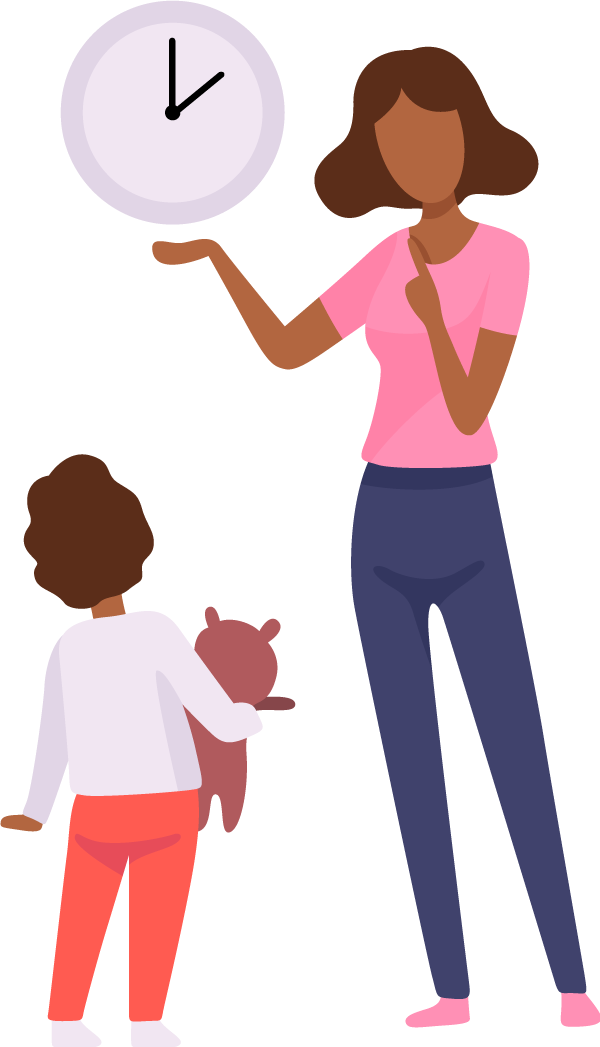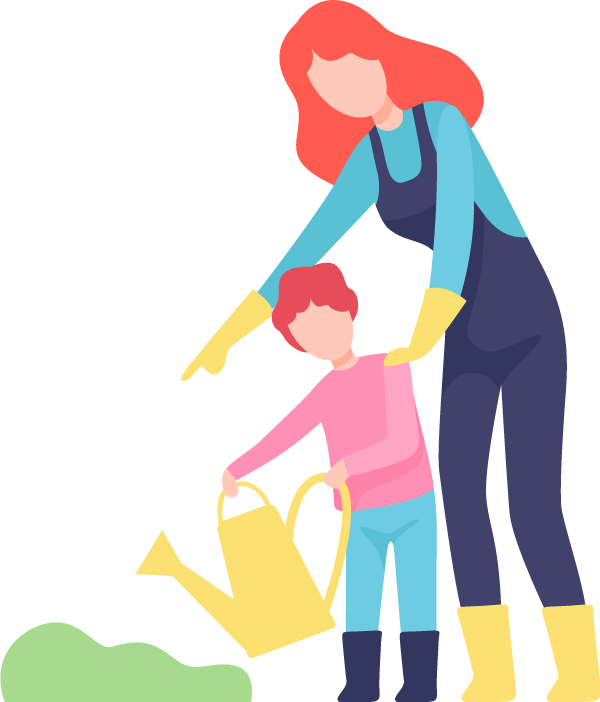
Developing Language Recommendation 2:
Linking Sounds to Letters Recommendation 3:
Blending Letters, Recognizing and Writing Words Recommendation 4:
Reading for Understanding
Developing Language Recommendation 2:
Linking Sounds to Letters Recommendation 3:
Blending Letters, Recognizing and Writing Words Recommendation 4:
Reading for Understanding
Help your child blend letters to read words and recognize common word parts and words, and encourage them to write words.
Blending Words

Blending is the ability to put sounds together to read a word. To read a word, children must know the sounds the letters represent in the word and be able to blend those sounds to come up with the correct word. For example, after children know the letter sounds /f/ for f, /ă/ for a, and /n/ for n, they learn to blend those sounds together to read the whole word. When they see the word fan, they are able to say, "/f/, /ă/, /n/, fan." We call this, blending words.
There are three Family Activities for blending words, organized from easier to more difficult: Levels 1, 2, and 3.
- The caretaker encourages the child to say each letter–sound that he selects to spell the word.
- As the child identifies letter–sounds and blends each word, the caretaker provides positive feedback.
- The caretaker makes sure the child knows what each word means by asking the child to use the word in a sentence or by explaining what the word means.
Suggested books that you can read with your child. These books are made up of simple words that your child can practice blending with your help. While your child reads, support him or her in blending the sounds when needed. To blend, say each letter sound in the word in the order they appear and then read the whole word. For example, /s/, /u/, /n/, sun. Maybe take turns reading a page to each other!
- The Cat in the Hat by Dr. Seuss
- One Fish, Two Fish, Red Fish, Blue Fish by Dr. Seuss
- Step Into Reading: http://www.stepintoreading.com
- I Can Read: https://www.icanread.com
Sound-Spelling Patterns

Sound-spelling patterns consist of letters that are often combined to make a specific sound. Look at these common sound-spelling patterns: ch, sh, th. These are called sound-spelling patterns because each time these letters are together, they make the same sound. For example, when c and h are together, it makes the sound, /ch/ as in chop. Look at the first list in the table below. Notice how each word has the same sound-spelling pattern, ch as in chop, hunch, chat. Did you notice that ch can be at the beginning or end of a word? Review the rest of the table.
| ch | sh | th |
|---|---|---|
| chop | fresh | this |
| hunch | shop | thick |
| champ | fish | with |
- Mom encouraged her son to read the words after he sorted them under the sound-spelling pattern.
- Mom talked about the meaning of words to help build vocabulary.
- Mom told her son that she is proud of him.
Common Word Parts

Understanding common word parts like base words, prefixes, and suffixes will help children break words into smaller, meaningful word parts, which can help them read, write, and understand more challenging words.
The word help is called a base word because it can stand alone and has meaning. It is also called a base word because we can add to it to change the word. For example, we can add the ending -ful, for the word helpful. When we add a word part to the end of a word, it is called a suffix. We can also add a word part to the beginning of a base word. When we add a word part to the beginning of a base word, it is called a prefix. For example, the prefix un- can be added to helpful to make the word unhelpful.
| Word | = | Prefix | + | Base Word | + | Suffix |
|---|---|---|---|---|---|---|
| Unhelpful | = | un | + | help | + | ful |
- Mom explains base words, prefixes, and suffixes.
- Mom talks about the meanings of the words and uses them in sentences to help build vocabulary.
- Mom says words in parts to help her son determine the base word, prefix, and suffix
Reading Words

Once children know letter sounds, like the letter s says /s/, and how to blend, they can read many words! Blending is the ability to put sounds together to read a word. For example, when children see the word soil, they are able to say, "/s/, /oi/, /l/, soil."
There are many ways to support your child in reading words. For example, provide opportunities for your child to practice reading words in a list or on flashcards. It is also important for children to practice reading words in sentences and stories.
- Mom encourages her son to point to the words as he reads.
- When her son has difficulty with a word, Mom points to the sound-spelling, reminds him what is says, asks him to read the word, and then read the whole sentence (oi, /oi/, noise; o, /o/, slop).
- Mom reminds her son to pause a little longer when he sees a period, so the words don't all run together.
- Mom asked questions after each paragraph to make sure her son understood what he read.
High-Frequency Words

High-frequency words are words that appear frequently in books. Examples of high-frequency words are again, every, know, could. It is important that children learn how to read high-frequency words automatically. When a child doesn't hesitate to read a word and pronounces it correctly, then he or she knows the word automatically. To become good readers, children must be able to read high-frequency words automatically. Practice is the key. The more your child reads and writes high-frequency words, the better he or she will get at reading them automatically.
There are many activities that families can do to help their children read high-frequency automatically.
- Show your child the high-frequency word of. Have your child say the word, write the word, and then say the word again.
- Use the provided high-frequency word cards as flash cards and time your child as he or she reads a stack of them. You can place words that were challenging for your child in a separate pile, so you know which words need more practice. The goal is to read more words correctly in less time each time you engage in the activity.
- Mom tells her son she is proud of him for practicing reading high-frequency words.
- Mom reminds her son to read each word on every card he flips over.
- Mom uses high-frequency cards as flashcards to provide her son another opportunity to practice.
Challenging and Important Words

Sometimes children want to read books that have words that are challenging to read but important for understanding what they read. For example, many children love to learn about dinosaurs but would have a hard time reading about dinosaurs because the words are too challenging. Tyrannosaurus rex would be considered challenging to read, but are important words in a book about dinosaurs. These words may be challenging because the child either has not learned the soun-spelling pattern contained in the word or the word contains irregular sound-spelling patterns as in the words pigeon or villain.
Just because a book contains challenging words, it doesn't mean that you can't read it with your child. Before reading a book with your child, skim it to see if there are any challenging and important words. Select three such words that appear most frequently in the book. Introduce the words to your child before you read the book. Point to each word in the book and tell your child how to pronounce it and what it means. Ask your child to point to the word and say it.
- Mom reviews the meaning of important words (electric blanket, strike, neutral) before reading the book.
- Mom asks questions and talks about the meanings of important words as she reads to make sure her son is understanding the book.
A list of suggested biographies to read with your child. Use the provided bookmark as a reminder to talk about challenging, important words that appear often in the book.
- Abe Lincoln and the Muddy Pig by Stephen Krensky
- Me…Jane by Patrick McDonnell
- Martin's Big Words by Doreen Rappaport and Bryan Collier
- Wilma Unlimited by Kathleen Krull
